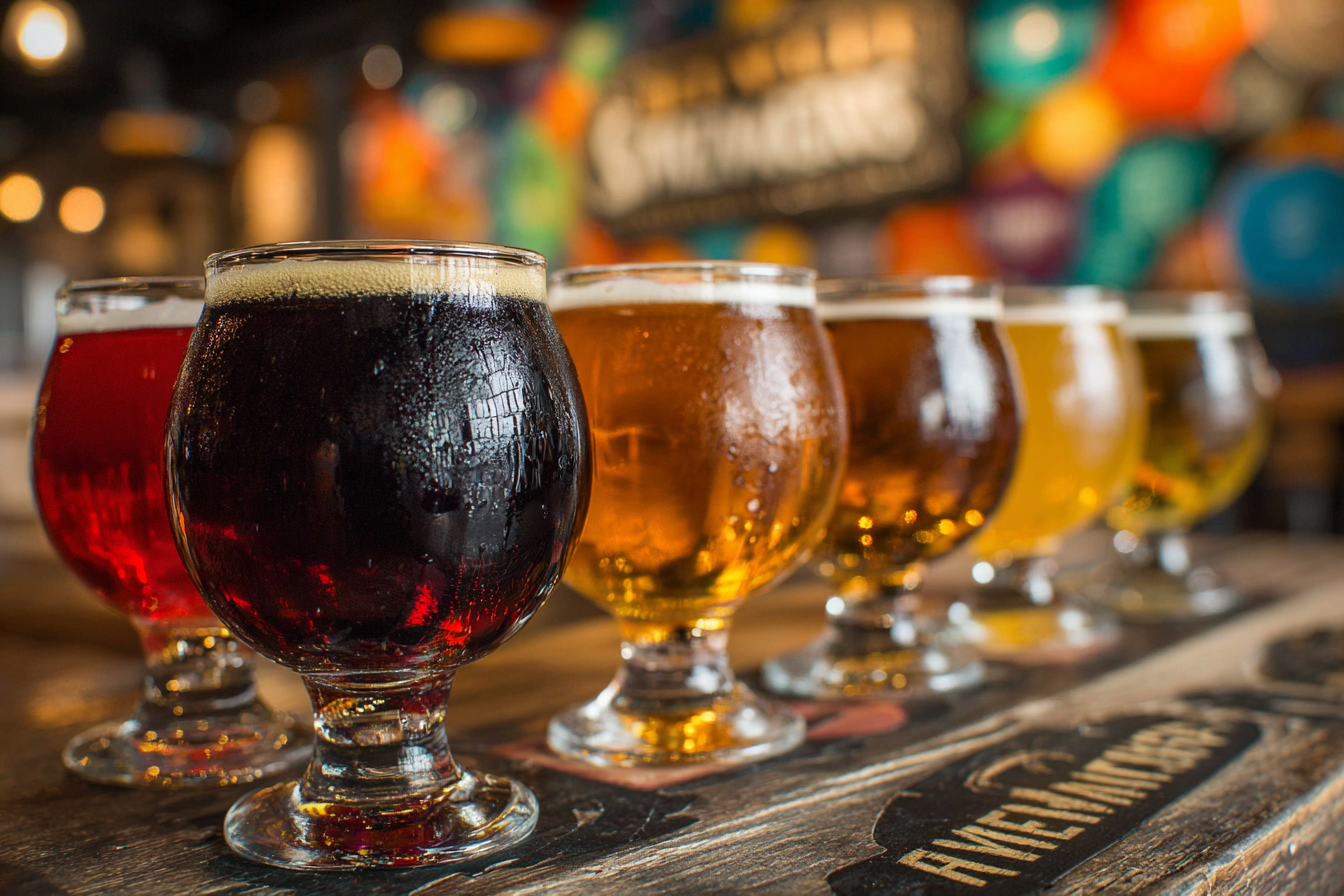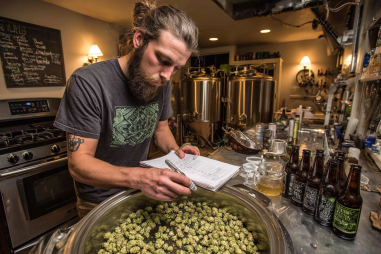Wee Heavy beer is a beloved style with deep roots in Scottish brewing tradition, known for its rich maltiness, warming strength, and complex flavors. While many craft beer enthusiasts cherish the classic interpretation, the wee heavy category has evolved and diversified over time. Today, brewers both honor tradition and embrace creativity, resulting in a fascinating range of styles and variations to explore. In this article, we’ll take you on a journey through the nuances of wee heavy beers—from their origins to modern twists—highlighting what makes this style so distinctive and versatile.
What Defines a Wee Heavy Beer?
At its core, the wee heavy is a strong Scotch ale characterized by its robust malt-forward profile and relatively high alcohol content, often ranging between 6.5% and 10% ABV or even more. The term “wee heavy” can be a bit misleading, as “wee” means small in Scots English, but here it affectionately refers to the beer’s modest serving size compared to lighter Scottish ales. The “heavy” part denotes the full-bodied, intense nature of the brew.
In style guidelines, wee heavy beers typically boast a deep amber to dark mahogany color, a pronounced caramel and toffee sweetness, some roasted notes from specialty malts, and very low hop bitterness. Their smooth, luscious mouthfeel and warming finish make them a favorite in colder climates and a perfect choice for sipping slowly.
The Traditional Scottish Interpretation
Wee heavy’s roots lie in traditional Scottish ales that developed centuries ago as a way to pack more flavor and calories into a small volume, providing sustenance and warmth. Historically, wee heavies were crafted with malted barley and signature Scotch ale yeast strains that contributed subtle fruity esters.
Classic Scottish brewing methods avoided heavy hopping, so bitterness takes a backseat to malty complexity in these beers. Traditional wee heavies feature notes of dark fruit like raisins or figs, caramel, toffee, a touch of smoke or peat in some cases, and a clean, malty sweetness that dominates the palate.
One of the best-known traditional examples includes McEwan’s 70/- and other venerable Scottish breweries that have kept the style alive with minimal modern influence, showcasing that distinctive blend of richness and drinkability.
Regional and Brewery-Based Variations
Although wee heavy originated in Scotland, variations emerged both regionally and among different breweries, often reflecting local preferences, ingredients, or brewing philosophies.
For example, some breweries in the Lowlands might produce lighter, less intense versions, leaning towards a sweeter and less oxidized profile, while Highland brewers could favor a smokier, peatier character influenced by local whisky traditions. Additionally, some brewers adjust malt bill ratios or yeast strains to impart unique flavor signatures, even within the classic wee heavy framework.
In America and beyond, craft breweries have adopted the wee heavy style but often infuse their local style or experimental touches, sometimes adding more hop presence or selecting unusual malts to create distinctions. These regional and brewery-driven variations widen the spectrum of flavors and styles classified under the wee heavy name.
Modern Adaptations and Experimental Brews
Today’s brewing landscape encourages innovation, and many brewers experiment with wee heavy beers to push the style’s boundaries. Modern adaptations may include adding non-traditional ingredients, altering fermentation techniques, or blending with other beer styles.
Examples include:
- Incorporating specialty malts like smoked malt to enhance complexity
- Using different yeast strains that bring atypical fruity or spicy esters
- Adding hops with unique aroma profiles, albeit carefully balanced to preserve malt character
- Introducing adjuncts such as honey, molasses, or dried fruits for additional layers of flavor
- Creating barrel-aged versions that combine Scotch ale richness with wood-derived notes
These experimental brews maintain the fundamental malty backbone but offer new tasting experiences that intrigue both craft beer newcomers and traditionalists. Many breweries label these variants as “wee heavy-inspired” or “modern wee heavy” to emphasize innovation within the category.
Differences in Strength and Flavor Profiles
Although wee heavies share some common traits, there is a broad range in alcohol content and flavor intensity across the style’s spectrum. Strength can vary from moderately strong (around 6.5% ABV) to incredibly potent expressions exceeding 10% or more.
Flavor profiles depend on malt combinations, yeast behavior, aging methods, and adjuncts used by brewers. Traditional wee heavies emphasize smooth caramel, toffee, and malt complexity with little bitterness. Experimental and regional versions may present:
- Richer roasted or chocolaty notes
- Subtle smoky or peated elements
- Dark fruit undertones such as fig, plum, or raisin
- Hints of vanilla, oak, or spice from barrel-aging
- Balanced, but sometimes perceptible, hop bitterness
Generally, wee heavy beers are prized for their smooth, lingering finish and warming qualities, but the nuances allow ample room for personal preference and exploration.
The Influence of Barrel Aging and Blending
One of the most exciting modern evolutions in wee heavy brewing is the use of barrel aging and blending techniques. Aging wee heavies in whisky, bourbon, or wine barrels imparts complex woody, vanilla, or smoky notes that complement the malty sweetness.
Blending barrel-aged versions with fresh or young versions can balance intense wood flavors, add depth, and introduce subtle acidity or funk, depending on the barrel’s history. This barrel-aging practice pays homage to Scotland’s rich whisky heritage while enhancing the beer’s complexity and depth.
Some producers even use solera or multi-vintage blending systems, creating unique flavor layers that develop over time, allowing beer lovers to savor a constantly evolving, sophisticated wee heavy expression.
Recommendations for Exploring Wee Heavy Variations
If you’re new to wee heavy beers or eager to deepen your appreciation, consider the following approach to explore the style’s breadth:
- Start with a classic Scottish wee heavy to understand the foundational flavor profile
- Try regional variations to identify nuances influenced by geography or brewery tradition
- Sample modern, experimental versions to appreciate innovative ingredients or techniques
- Seek out barrel-aged or blended wee heavies for complex, layered tasting experiences
- Take notes on strength, malt character, roastiness, sweetness, and any unique attributes
Many specialty beer bars and breweries offer flight tastings or sampler packs that allow direct comparison of different wee heavy beers—ideal for discovering what styles and variations resonate most with your personal palate.
A Toast to Rich Tradition and Creative Innovation
The wee heavy beer style exemplifies how tradition and innovation can coexist beautifully. Rooted in Scottish brewing history as a warming, malt-centric ale, wee heavy beers continue to captivate drinkers worldwide through rich flavor, substantial body, and versatility.
Whether you prefer a scoffingly traditional example, a creatively hopped variant, or a nuanced barrel-aged blend, exploring the many facets of wee heavy beer offers a rewarding and delicious adventure. As brewers keep pushing the boundaries and experimenting, the wee heavy landscape continues to grow richer—inviting enthusiasts to sip, savor, and celebrate this iconic style in all its diverse glory.







